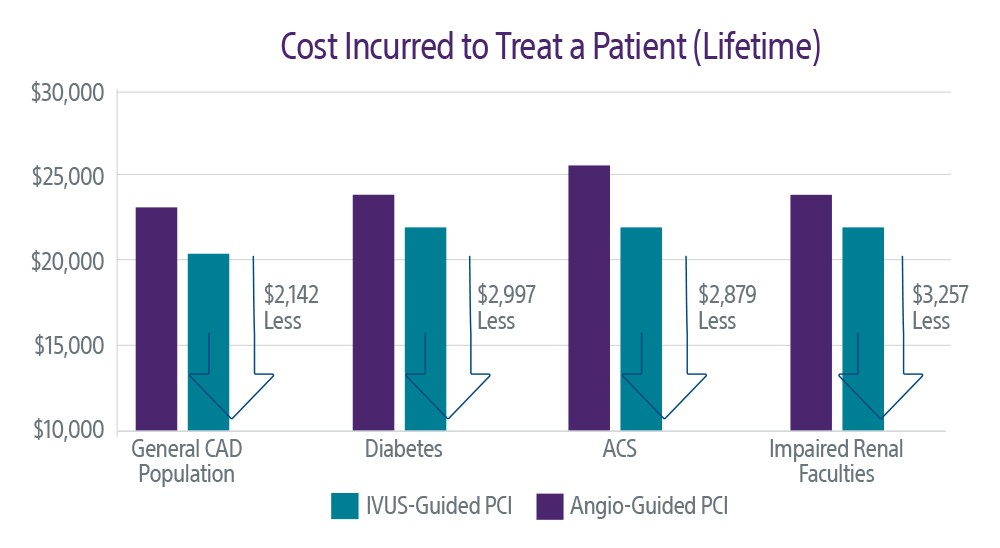IVUS saves Lives
The 2024 ESC Guidelines rank IVUS at
class 1, level A1
Recently, the ESC has changed their recommendation for IVUS or OCT - guidance of PCI on anatomically complex lesions, particularly Left Main, true bifurcations and long lesions to class 1, level A1 . Their decision was supported by recent clinical studies such as RENOVATE-Complex PCI2 (complex lesions), IVUS-XPL3 (long lesions) and OCTOBER4 (true bifurcations) all showing positive evidence that intravasular imaging optimizes patient outcomes when compared to angiography alone.
The infographic one-pager available for download, highlights the key IVUS data available.
IVUS Guidance Optimizes Coronary Outcomes
Intravascular ultrasound (IVUS) is a core tenet of the SYNTAX II 5 methodology for state-of-the-art PCI. The study’s five-year outcomes, along with several other highly-regarded trials, demonstrate that IVUS visualization optimizes long-term outcomes by enabling more comprehensive procedure planning, execution, and assessment.
- Minimum lumen area in the stented segment more than 5.00mm2 or 90% of the minimal lumen area at the distal reference segments
- Plaque burden 5mm proximal or distal to the stent edge <50%
- No edge dissection involving the media with length more than 3mm
- Statistically higher MACE rates when stent deformation occurred
- Stent deformation at 3 years: 28% MACE
- No stent deformation at 3 years: 13% MACE






























